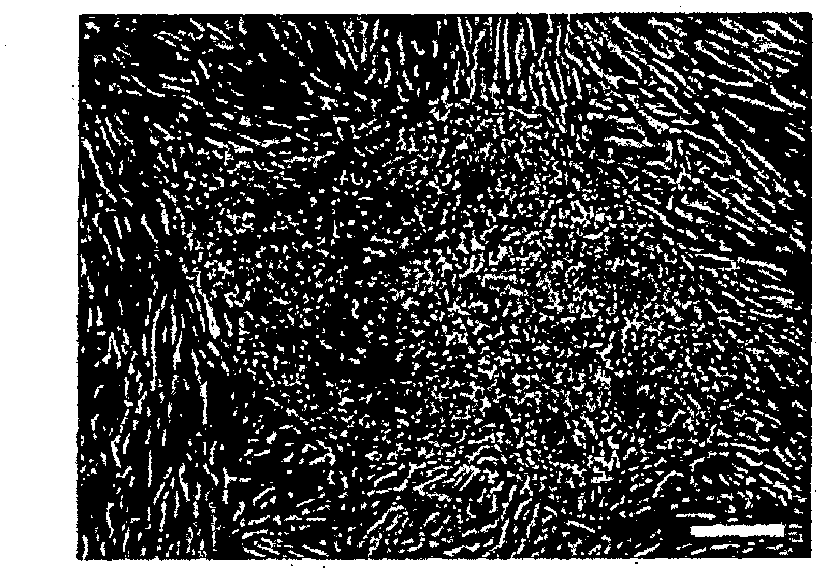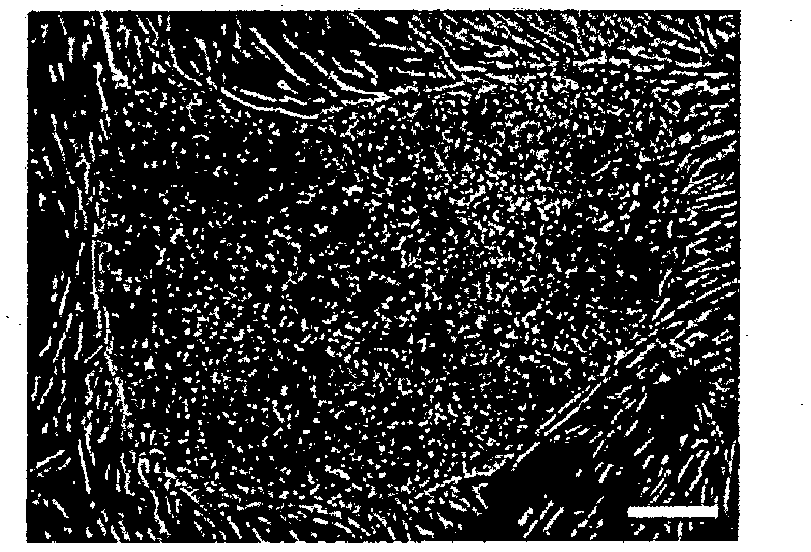Formulations and methods for culturing stem cells
A stem cell, cell technology, applied in the field of preparations without xenogeneic substances, can solve problems such as tendency to be abnormal, insufficient reproducibility, and inability to maintain long-term hESCs
- Summary
- Abstract
- Description
- Claims
- Application Information
AI Technical Summary
Problems solved by technology
Method used
Image
Examples
Embodiment 1
[0085] Example 1. Effect of medium osmolarity on hESCs.
[0086]To improve the performance of xeno-free formulations, we optimized the osmolarity of the medium according to the invention. The osmolarity was adjusted with 5M NaC. We tested various osmolality in cultures of 5 passages of human embryonic stem cells (hESCs) and examined cell morphology after each passage. Use an osmolarity of 320mOsm for best performance ( Figure 1C ). Using 260mOsm osmolality ( Figure 1A ) formed small heterogeneous colonies and despite an osmolarity of 290mOsm ( Figure 1B ) improved the morphology of the colonies, but the size of the colonies was small. The osmolarity of 350mOsm obviously limited the colony growth ( Figure 1D ).
Embodiment 2
[0087] Example 2. Specific Lipids and Lipid Derivatives Enhance Undifferentiated Growth of hESCs.
[0088] Various lipids and lipid derivatives were tested in the medium according to the invention (RegES) and in conventional hES medium containing KO-SR (Knockout Serum Replacement, Invitrogen). Undifferentiated colonies were evaluated for general morphology, as well as size and thickness, prior to each passage based on visual perception (Table 3). According to the results, conjugated linoleic acid, eicosapentaenoic acid, palmitoleic acid, linoleic acid, linoleic-oil-arachidonic acid mixture and especially retinol improved the expression in hES medium and according to the present invention. Morphology of undifferentiated colonies in both media (Table 3). Furthermore, stearic acid, lysophosphatidylcholine, phosphatidylethanolamine, prostaglandin F2 and DL-isoproterenol lead to poor morphology and / or excessive differentiation in hES medium, whereas in the medium according to the ...
Embodiment 3
[0094] Example 3. Retinol increases proliferation and expression of stem cell markers.
[0095] Retinol was selected for further evaluation in the maintenance of undifferentiated hESCs. Preliminary studies indicated that retinol at concentrations of 0.1-0.5 [mu]M was ineffective and no improvement in morphology or number of undifferentiated colonies was seen. However, further evaluation showed that retinol at a concentration of 2.0 μM or above improved the proliferation of hESCs and induced the expression of hESC-specific markers (Fig. 3). In the presence of 2.0 μM retinol, the growth of the colonies started earlier and the size of the colonies was already larger at day 3 ( Figure 3A-3B ). Proliferation assays showed that hESCs cultured in the presence of 2.0 μM or 3.5 μM retinol had almost 2-fold greater Proliferation rate ( Figure 3E ). Immunocytochemical staining of hESCs cultured in the presence of retinol revealed the expression of stem cell markers Nanog and TRA-1...
PUM
 Login to View More
Login to View More Abstract
Description
Claims
Application Information
 Login to View More
Login to View More - R&D
- Intellectual Property
- Life Sciences
- Materials
- Tech Scout
- Unparalleled Data Quality
- Higher Quality Content
- 60% Fewer Hallucinations
Browse by: Latest US Patents, China's latest patents, Technical Efficacy Thesaurus, Application Domain, Technology Topic, Popular Technical Reports.
© 2025 PatSnap. All rights reserved.Legal|Privacy policy|Modern Slavery Act Transparency Statement|Sitemap|About US| Contact US: help@patsnap.com



